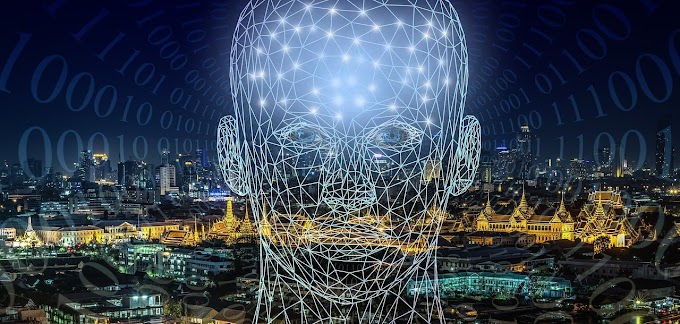10 risks of AI implementation in education
- Introduction to the hidden dangers of AI in education.
- Identification of ten prominent risks associated with AI implementation.
- Discussion of the first five risks, including bias, privacy, and job displacement.
- Examination of the second set of risks, such as reduced creativity and ethical concerns.
- Emphasis on the need for transparency and accountability in AI.
- Addressing the widening of the achievement gap and unintended consequences.
- Strategies to mitigate risks, including reskilling and upskilling for educators.
- Promoting equity in AI access to prevent achievement gap widening.
- Advocating for ethical frameworks and open-source AI tools.
- The importance of finding a balanced approach to maximize AI's benefits while minimizing potential drawbacks in education.
Let's start
Artificial Intelligence (AI) has undoubtedly transformed the way we live and learn. From virtual classrooms to personalized learning experiences, AI has left an indelible mark on the field of education. However, as we delve deeper into this technological revolution, it becomes imperative to shed light on the concealed perils that accompany it. In this series, "Unveiling the Hidden Dangers: Risks of AI Implementation in Education," we embark on a journey to explore the shadowed facets of AI in the educational landscape. Join us as we uncover the challenges, ethical dilemmas, and potential pitfalls lurking beneath the surface of AI's promising advancements in education.
- Bias: AI systems are only as unbiased as the data they are trained on. When AI is used for tasks such as student assessment and admission processes, the inherent biases in historical data can be perpetuated, potentially perpetuating inequalities. Addressing algorithmic bias and ensuring fairness in AI-driven decision-making is paramount.
- Privacy and Security: AI collects vast amounts of student data, which, if mishandled, can lead to privacy breaches and security vulnerabilities. It's crucial to establish robust data protection measures and maintain the highest standards of cybersecurity to safeguard sensitive information.
- Loss of Control: As AI takes on more roles in education, there is a concern about relinquishing control to machines. The more we automate, the more we rely on AI, potentially diminishing human involvement and oversight in educational processes. Striking the right balance is essential.
- Job Displacement: While AI can enhance efficiency, it also raises concerns about job displacement. Teachers and educational professionals may worry about their job security as certain tasks become automated. It's vital to address these concerns and emphasize how AI can be a complement to, rather than a replacement for, educators.
- Increased Screen Time: The proliferation of AI-powered edtech tools often means more screen time for students. Excessive screen time can have adverse effects on physical and mental health. Balancing technology use with offline activities is a challenge that educators and parents need to navigate.
- Reduced Creativity and Critical Thinking: AI-driven educational tools often focus on standardized assessments and predetermined learning outcomes. While these have their merits, there is a risk that the emphasis on quantifiable results might stifle students' creativity and critical thinking skills, which are crucial for problem-solving in the real world.
- Widening of the Achievement Gap: Paradoxically, AI, which promises to personalize learning, could inadvertently widen the achievement gap. Students with access to advanced AI tools and technology may outperform their peers who lack such resources, exacerbating educational inequalities.
- Lack of Transparency and Accountability: The inner workings of AI algorithms can be complex and opaque. This lack of transparency can make it challenging to understand how AI systems make decisions, raising concerns about accountability in the event of errors or biases. Establishing clear transparency and accountability measures is essential.
- Ethical Concerns: The ethical implications of AI in education are multifaceted. From the use of AI in surveillance within educational environments to issues related to data privacy and consent, there's a need for rigorous ethical guidelines to ensure AI is deployed in a manner that respects individual rights and values.
- Unintended Consequences: Introducing AI into education may yield unintended consequences. For example, overreliance on AI-driven assessments might prioritize test scores over holistic development. Understanding and mitigating these unintended effects are crucial to harnessing the full potential of AI in education.
As we've uncovered the hidden dangers of AI implementation in education, it's essential to transition from awareness to action. In this third part of our series, we'll explore practical strategies and solutions to mitigate these risks effectively.
- Mitigating Bias: To address bias, start with diverse and representative training data. Regularly audit AI algorithms for fairness and implement bias-mitigation techniques.
- Enhancing Privacy and Security: Protect data with robust encryption and access controls. Ensure compliance with data protection regulations and conduct regular security assessments.
- Maintaining Control: Set clear boundaries for AI roles in education and maintain human oversight. Develop guidelines for human-AI collaboration.
- Addressing Job Displacement: Focus on reskilling and upskilling educators for roles that complement AI. Emphasize the irreplaceable qualities of human educators.
- Balancing Screen Time: Encourage a healthy tech-life balance. Promote offline activities and screen-time limits to prevent excessive technology use.
- Fostering Creativity and Critical Thinking: Encourage project-based learning, open-ended assignments, and creative problem-solving activities to counterbalance AI's focus on standardized assessments.
- Narrowing the Achievement Gap: Prioritize equitable access to AI tools and technology, ensuring that all students have the opportunity to benefit from personalized learning experiences.
- Transparency and Accountability: Advocate for open-source AI tools and algorithms in education to enhance transparency. Establish clear guidelines and oversight bodies for AI use.
- Ethical Frameworks: Develop and implement ethical guidelines for AI use in education, emphasizing data privacy, consent, and respectful treatment of individuals.
- Mitigating Unintended Consequences: Continuously monitor and evaluate AI's impact on education, adjusting strategies to address any unanticipated negative effects.
At the End
In conclusion, our exploration of the hidden dangers and potential pitfalls of AI implementation in education has shed light on critical issues. From bias and privacy concerns to threats of job displacement and the impact on creativity, these challenges are real and demand our attention. However, by proactively addressing these risks through transparency, ethical frameworks, and responsible AI use, we can harness the transformative power of AI while minimizing its drawbacks. The key lies in striking a balance that empowers educators, fosters creativity, narrows achievement gaps, and upholds the values of fairness and accountability. Together, we can navigate this evolving landscape for the betterment of education. Thank you for joining us on this journey.







